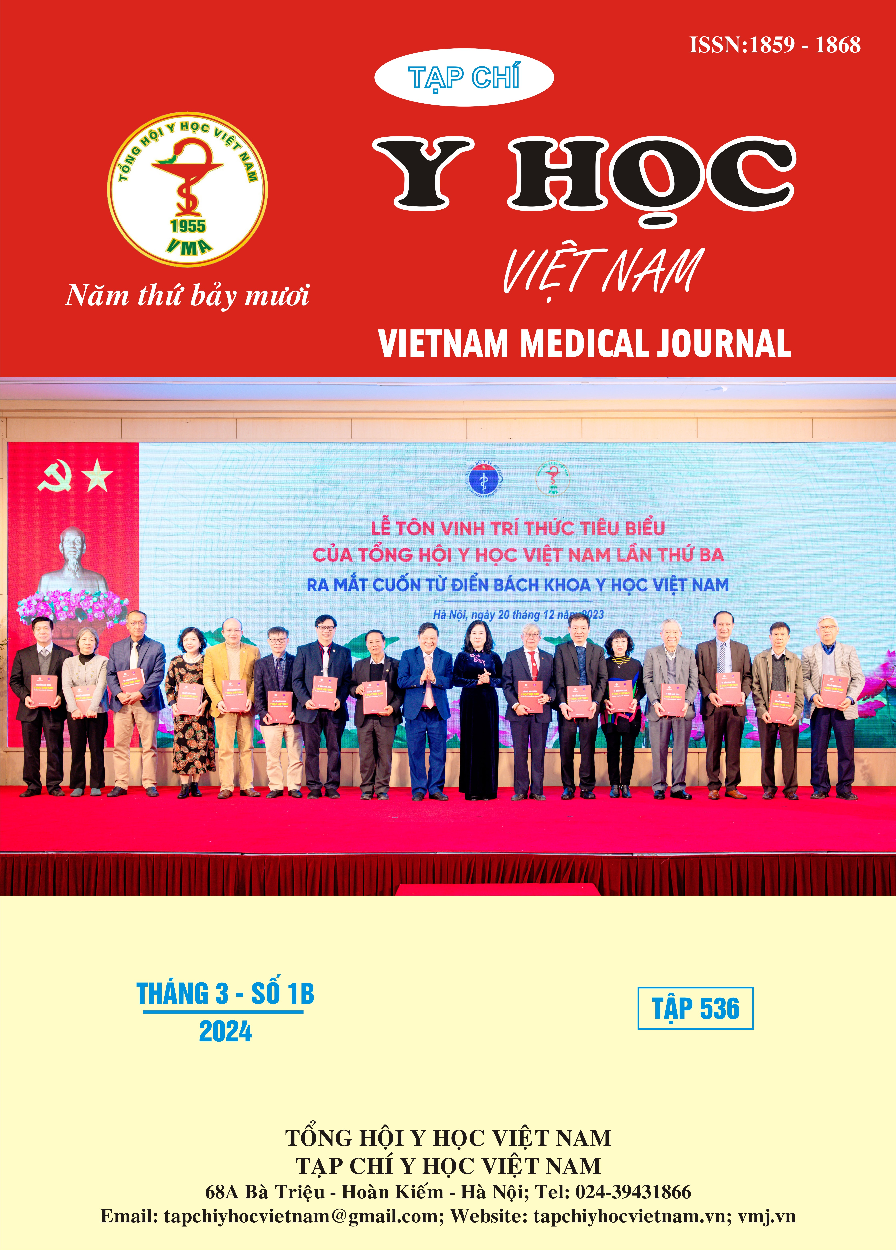EXPRESSION OF Ki-67 IN SALIVARY GLAND CANCERS
Main Article Content
Abstract
Introduction: Increased Ki-67 expression is associated with the pathology, malignancy, and poor prognosis of salivary gland cancer. This study investigates the relationship between the Ki-67 expression and clinical and pathological characteristics of salivary gland cancer. Subjects and methods: A cross-sectional descriptive study of 111 cases of salivary gland cancer treated at the Ho Chi Minh City Oncology Hospital from January 1, 2016, to December 31, 2017. Results: Ki-67 expression was higher in females than males (median 3.7% vs 3.3%). Ki 67 expression was different according to age group, specifically the rate was higher in the age group of 40 years and over (median 4.2% in the 40-59 age group and 7.3% in the ≥60 age group). Ki-67 expression in major salivary gland cancer was higher than in minor salivary gland cancer. T1 and T2 tumors had lower Ki-67 expression (3.1% and 2.3%) than T3 and T4 tumors (3.6% and 5.7%). Tumors with distant metastasis had much higher Ki-67 expression than tumors without metastasis (26.5% and 3.4%). The cases with lymph node metastasis (N1 and N2) had significantly higher Ki-67 expression than those without positive lymph nodes (17.9% and 13.8% vs 2.8%); the difference was statistically significant (p < 0.05). In addition, tumors in stage IV had higher Ki-67 expression (5.8%) than those in stage I (3.1%), stage II (2.1%), and III (2.3%). Regarding histological classification, the group with high Ki-67 expression was adenoid cystic carcinoma, mucoepidermoid carcinoma, and a single case of carcinoma ex pleomorphic adenoma with an expression rate of up to 67%. Conclusion: Ki-67 expression may reflect the degree of clinical progression, the degree of pathological malignancy, and the prognosis of salivary gland cancer.
Article Details
References
2. Bussari S., et al. (2018), "Immunohistochemical Detection of Proliferative Marker Ki-67 in Benign and Malignant Salivary Gland Tumors", J Contemp Dent Pract, Vol.19(4), pp.375-383.
3. John K. C. C. (2017), WHO Classification of Head and Neck Tumours, International Agency for Research on Cancer, 4th Edition, pp.347.
4. Kaza Suma, et al. (2016), "Ki-67 Index in Salivary Gland Neoplasms", Vol.66, pp.1-71.
5. Larsen S. R., et al. (2012), "Prognostic significance of Ki-67 in salivary gland carcinomas", J Oral Pathol Med, Vol.41(8), pp.598-602.
6. Park S., et al. (2016), "VEGF and Ki-67 Overexpression in Predicting Poor Overall Survival in Adenoid Cystic Carcinoma", Cancer Res Treat, Vol.48(2), pp.518-26.
7. Parkin D. M., et al. (2002), Cancer Incidence in Five Continents, International Agency for Research on Cancer, France, pp.781.
8. To V. S., et al. (2012), "Review of salivary gland neoplasms", ISRN Otolaryngol, Vol.2012, pp.872982.


